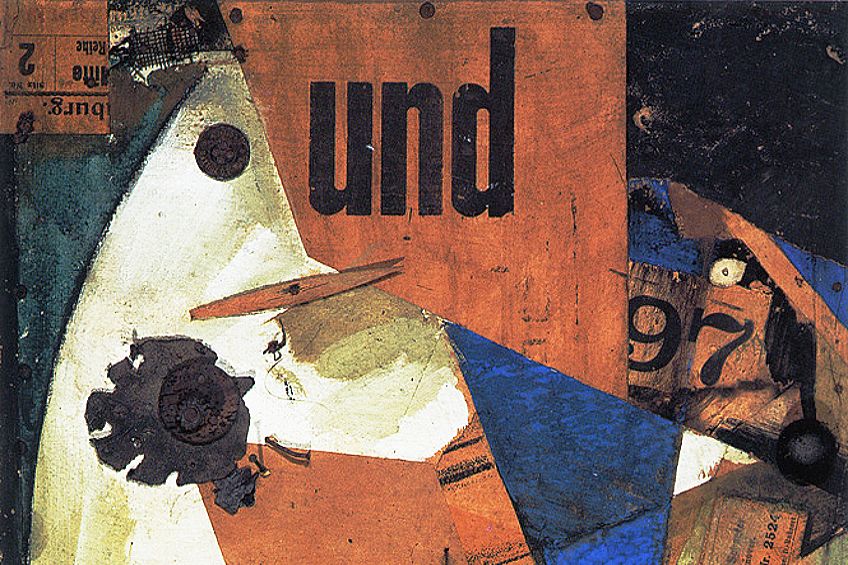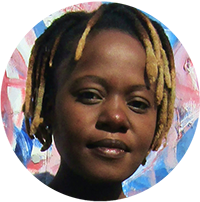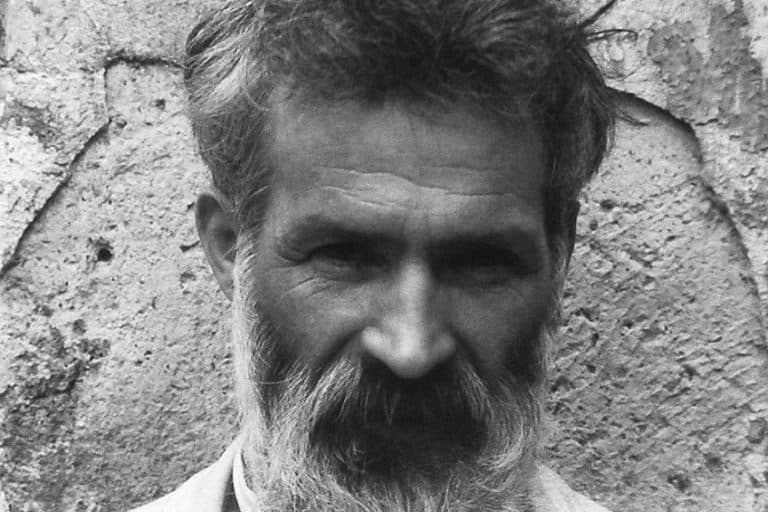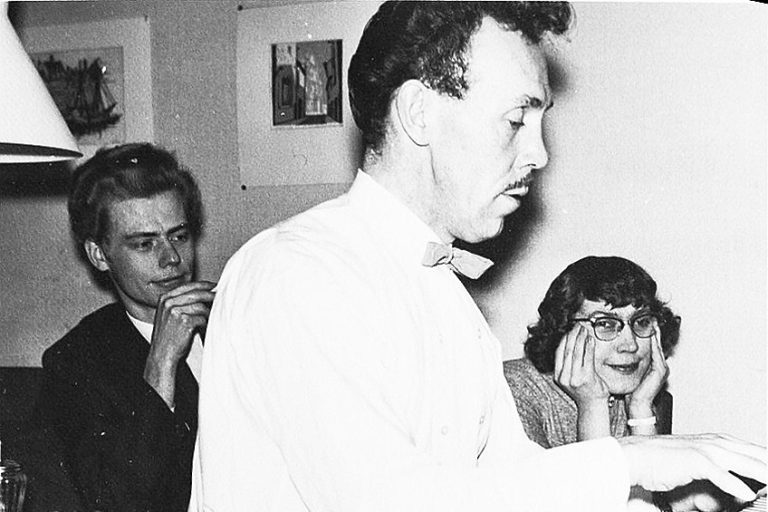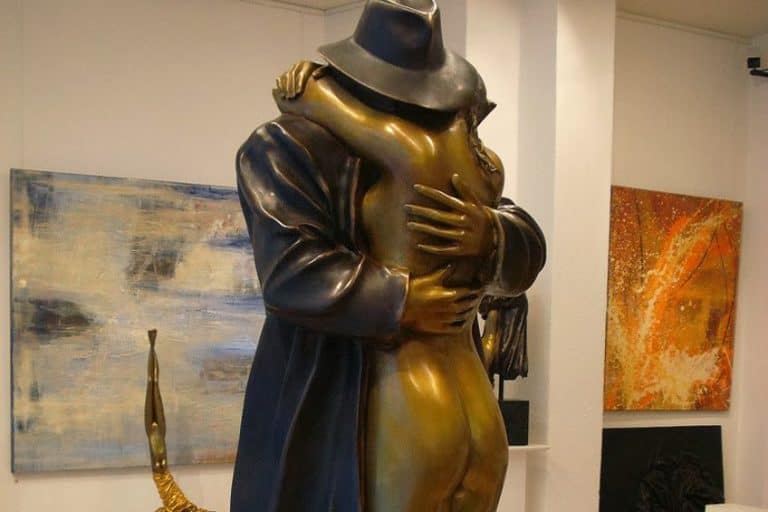Famous Collage Artists – Maestros of Visual Amalgamation
Collage Artwork existed long before there was a modern term to describe it. It has been used by a wide range of artists because of its capacity for abstraction and interpretative potential. When artists combine disparate elements to form a collage, they create new meaning. They turn familiar things into new, bizarre, and irrational forms.
Collage Artwork
Pablo Picasso and Georges Braque are often credited for the birth of collage. They were among the first to engage mass media in their synthetic Cubist collages. These early appropriations of real-world materials inspired a slew of artists like Surrealist Max Ernst and Dadaist Hannah Höch to follow suit.
Since then, collage has become one of the most accessible art forms and has fuelled the debate about high versus low art.
What Is a Collage?
Collage describes both the process and the finished product of a form of artmaking. Popular collage art materials include magazine and newspaper clippings, photographs, portions of other artwork, bits of colored or hand-made paper, fabric, other textures, or found objects. Collage is typically two-dimensional, made by gluing materials onto flat surfaces like paper, board, or canvas.
The term collage comes from the French word coller meaning “to glue” which was coined at the beginning of the 20th century by Cubist artists Georges Braque and Pablo Picasso.
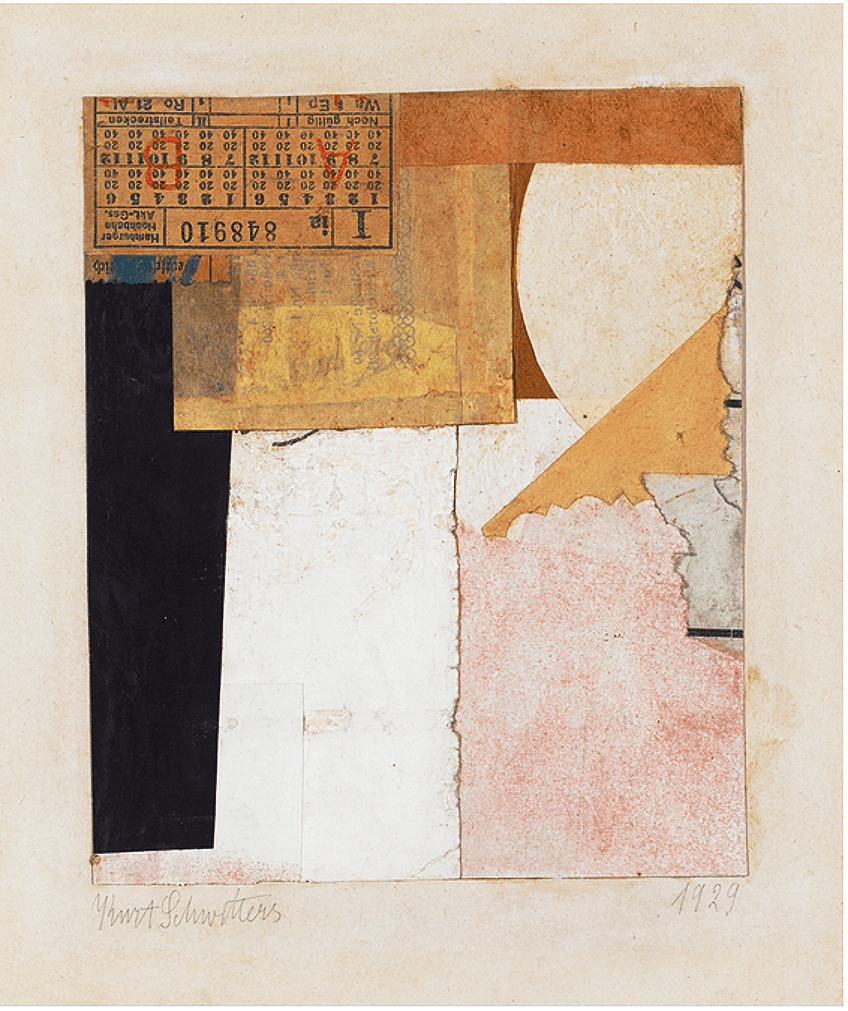
Decoupage is a type of collage usually categorized as a craft because it has decorative aims. Assemblage is often associated with sculptural and found objects. The technique of pasting materials onto a surface can include layered textures that create the pattern, and depth, often coated with varnish or similar sealants for protection.
The History of Collage Art
The origins of collage art can be traced back centuries to 105 AD when craftsmen first invented making processes in the Eastern Han period of China. Soon after, there was evidence of the use of collage techniques.
However, it wasn’t until the 10th century in Japan, that glued paper was officially used by calligraphers.
Chinese pulp mills quickly spread to other parts of Asia, Africa, the Middle East and had arrived in Europe by the 11th century. Early adhesives such as Arabic skin glue were made from plant resins, animal bones, hides, and skins. The artistic technique of gluing to create images appeared in the 13th century medieval. The image of St. Dorothea (c. 1450 – 1500 CE) shows that the trees, border, and St. Dorothea’s dress were decorated with crystals and tinsel.

By the 15th and 16th centuries, religious images in manuscripts, gothic cathedrals, and noble Coats of Arms were commonly adorned with gold leaf, gemstones, and other precious items. Paper collage art forms such as silhouette became popular in the 19th century as domestic novelties that would have been affordable and accessible to a wider range of people.
In the early 20th century, collage came to the forefront of modern art. It solidified its place in fine art around 1912 when it coalesced with art movements such as Cubism, Constructivism, and Futurism. Dada, which began in 1916 in Zürich, Switzerland, was especially suited to the collage art form.
The artistic and literary movement of Dada emerged as a response to the disasters of World War I (1914-1918) and the mechanized modern mass media culture. Dada artists experimented with a range of collage techniques, challenging ideas of how art could look and what it could be made of.
Ten Famous Collage Artists
Artists who make collages are not unified by their technique or a specific aesthetic for their work. Using this malleable and expressive medium, their instincts have shaped the way that we see and make images, as well as how we understand them.
Some of the most famous collage artists have been able to evoke both serious complexity and irreverent absurdity, often simultaneously.
Henri Matisse (1870 – 1954)
| Lived | 31 December 1869 – 3 November 1954 |
| Places Lived | Nice, Collioure, Le Cateau-Cambrésis, France |
| Associated Art Movements | Expressionism, Post-Impressionism, Fauvism, Modern Art |
| Nationality | French |
One of the most well-loved painters of the 20th century Henri Matisse had a long career as a key figure of Modern Art. Having been diagnosed with cancer, he started to use a wheelchair and was often bedridden.
ISo, in 1941, towards the end of his career, Matisse began using his assistants to create his famous cut-outs.
Large sheets of white paper were painted. Then these sheets of vibrant color were cut into shapes and arranged into compositions. Matisse created his collages by placing the cutout, simplified, flat, colored forms were onto paper. Henri Matisse enjoyed finding the composition as he worked. The shapes sometimes automatically resembled human figures, other times they were animal-like. Other times the cutouts would have to be coaxed into motifs Matisse enjoyed such as stars, fish, or dancing forms.
https://www.youtube.com/watch?v=rLgSd8ka0Gs&t=37s
The dynamic colors of these cutout forms give the composition a sense of play. The patterns, the scale, and the color show that Matisse was referencing liberation, movement, and gesture. His process spoke to a nostalgic notion of soaring and sweeping. Even in his wheelchair, the artist was at play and he wanted his resulting cutouts to engage and inspire the viewer.
But these late works are often written off as a superficial crowd pleaser and not indicative of a serious artist, even when Matisse’s cutouts are praised it is for their childlike quality. This did not detract from the exuberance of Matisse’s new pictorial language as seen in “The Swimming Pool” (1952), which was made two years before his death.
Pablo Picasso (1881 – 1973)
| Lived | 25 October 1881 – 8 April 1973 |
| Places Lived | Málaga, Barcelona, Madrid, Spain, Paris, France |
| Associated Art Movements | Cubism |
| Nationality | Spanish |
In the winter of 1912 – 1913, the artist Georges Braque and Pablo Picasso began gluing materials like cabinet lining and wallpaper onto their artworks resulting in the first modern art collages. They cut out in the desired shape and then stick the pieces of paper together called these “Papiers Colliers” (Collage).
With this new technique of pasting textures or painted pieces of paper in their compositions, they engaged a strange interplay between reality and illusion.
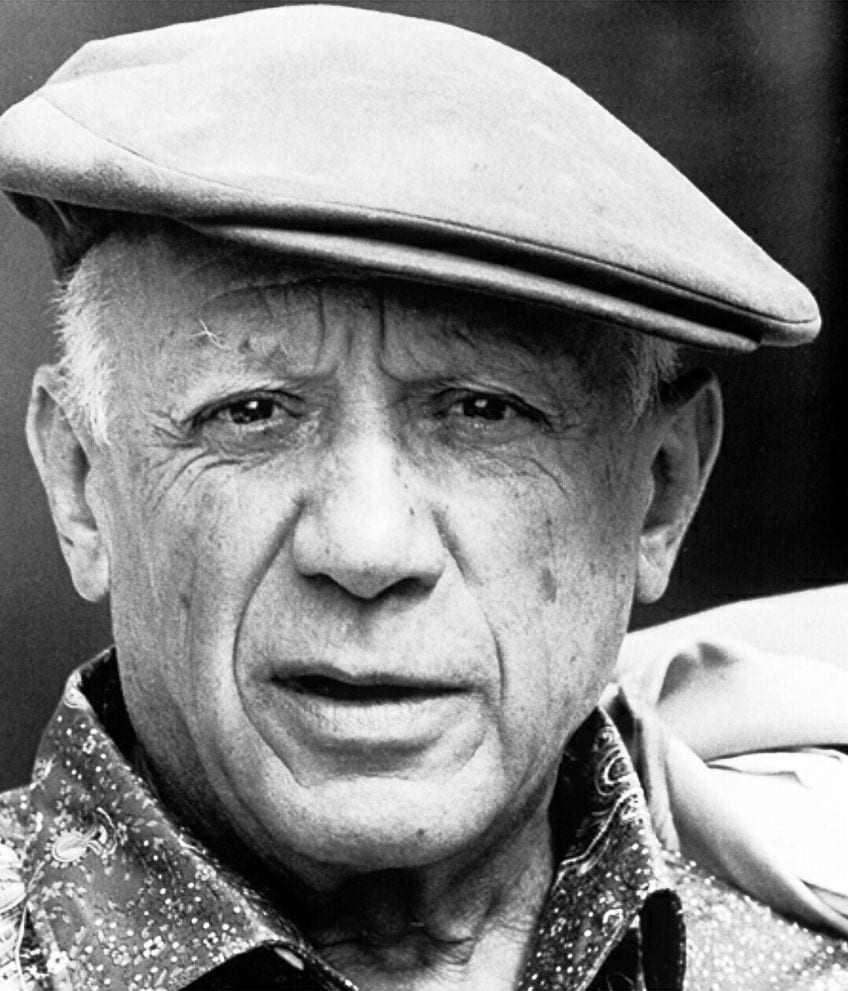
Picasso’s Still Life with Chair Caning (1912) was an exploration of the Cubist’s aim to depict reality without relying on illusionism. Instead of using traditional painting methods, the oil on cloth artwork which was framed with rope was the first time Picasso incorporated collage into his work.
The subject for Still Life With Chair Caning is the typical Parisian café table. On it, we see glass, a sliced lemon, and the stem of a pipe painted in the high analytic style. The cane chair pattern is painted with immense detail and the actual thick textured rope is a used frame.
The assemblage of materials that make up the image includes magazine cuttings, fragments of posters, sand, wire, newspaper, napkin edge, and lemon rind. Picasso drew and painted on top of the found materials confronting the bounds of what art was.
Kurt Schwitters (1887 – 1948)
| Lived | 20 June 1887 – 8 January 1948 |
| Places Lived | Zürich, Hanover, Germany |
| Associated Art Movements | Dada, Merz, De Stijl |
| Nationality | German |
German artist Kurt Schwitters started with an academic style and worked across genres and media including Cubism, Constructivism, Futurism, and Dada. Schwitters eventually turned away from Dadaism in favor of the Dutch De Stijl movement. He worked with poetry, typography and was a pioneer of installation and performance art. His Merz pictures show only form, no content.
Schwitters uniquely produced images that combined oil painting on canvas with assemblage. He pasted and nailed the materials onto his surfaces. The different materials included ink pad stamps, ticket stubs, matchbooks, daily newspapers, photo clippings, garbage, and other everyday objects.
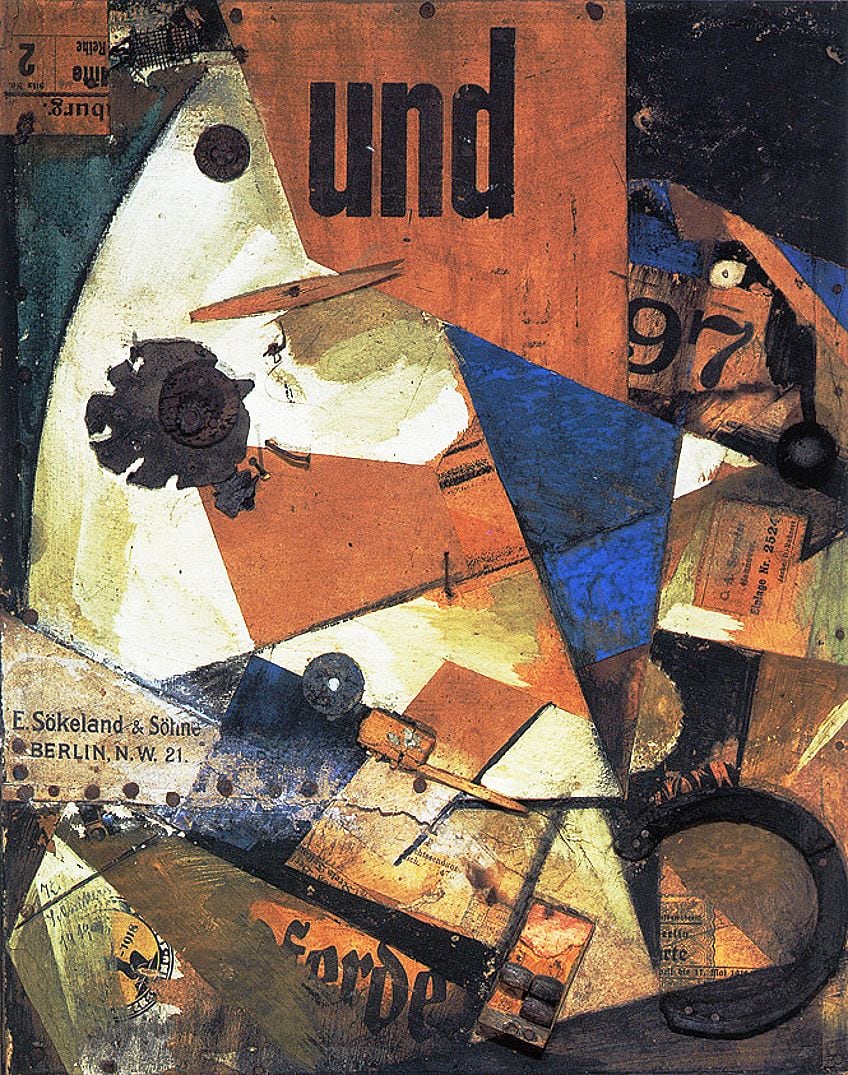
To Schwitters, the material was of no consequence. He aimed to assemble these daily items into Cubist collages and find a rich and complex arrangement of material that negated the individual features of the objects creating new pictorial symbols.
Over time, Schwitters abandoned paint altogether, which had acted as a binder for his materials.
Wenzel Kind Mz 151 (1921) was based on an existing image that Schwitters had not altered much. It is a reproduction of a Raphael painting but Schwitters’ minimal interventions do change the image and its meaning. Increasingly, he began to blur the lines between collage and found art. The And-Picture (1919) was seen as readymade, though it is a combination of collage, painting, and found objects.
Hannah Höch (1889 – 1978)
| Lived | 1 November 1889 – 31 May 1978 |
| Places Lived | Gotha, Berlin, Germany |
| Associated Art Movements | Primitivism, Dada |
| Nationality | German |
German artist Hannah Höch was considered an originator of the method of photomontage. Earlier in her career, she had been associated with Dada and in 1919, Höch worked at a large publishing house in Berlin where she became inspired by the printed imagery around her. Leafing through the many publications in her office, she began to cut out images that interested her. She arranged the images in jarring yet jovial juxtapositions whilst demonstrating restraint and embracing negative space.
The most famous Hannah Höch collage is “Cut With the Kitchen Knife through the Beer-Belly of the Weimar Republic” (1920), which measures 90 by 144 centimeters. The masculine aesthetic was achieved through cutouts of war machinery, cogs airplanes, and guns. Höch’s fascination with machines echoes the fast-paced destruction of industrialization.

The title for this piece illustrates Höch’s critique of the so-called beer belly brigade. This piece was made in the winter of 1919 and reflects a chaotic transitional period after World War I in the German establishment.
The whole top right zone depicts top hats, famous political figures, male Dadaists, and government officials with an image of Kaizer Wilhelm II himself bang in the middle. Höch replaced his right eye has been with a baby and made his mustache into the legs of a wrestler. This image is a searing indictment of masculinity.
Her cutouts were taken from well-known newspapers and magazines. Her use of familiar figures such as Albert Einstein would have been jarring to viewers. Through appropriation, Höch mixed and recreated a new statement, dismantling traditional ideas of image-making.
Man Ray (1890 – 1976)
| Lived | August 27, 1890 – November 18, 1976 |
| Places Lived | Philadelphia, Pennsylvania, United States, Paris, Zurich |
| Associated Art Movements | Dada, Surrealism |
| Nationality | French |
French painter Man Ray’s early work Paysage Fauve, Landscape (1913) spoke a Cubist language. His Cubist landscapes were already close to collage but once the artist moved to Paris, his work became distinctly Surrealist.
At this point, dream-like scenes and distorted biomorphic figures found their way into Ray’s assemblage.
The Rope Dancer Accompanies Herself with Her Shadows (1916) is quite abstract. After seeing a vaudeville show, the artist had used construction paper to build the dancer. After completing her, he happened to prefer the offcuts from his process. So much so that the offcuts pieces of paper would become the basis of his future paintings.
Man Ray also interestingly used photography to create collage art that was not photomontage. In his 1922 ground-breaking book Les Chaps Delicieux or “The Delicious Fields” Man Ray unleashed his Rayographs, more commonly known as photograms. Photograms are produced through a technique in which objects are laid onto light-sensitive paper which is exposed creating a strangely transparent collage. While photograms dated back to the 19th century, Man Ray’s approach was refreshing.
When the assembled objects were exposed to light, the photographic paper underneath the objects was not.
Man Ray chose objects that had different levels of translucence, adding to the abstract aesthetic. The opaquer the objects, the more negative the space appeared though this was collage art that was ultimately about negativity. Cameraless photographs, objectless objects, and negative space negatives.
Max Ernst (1891 – 1976)
| Lived | 2 April 1891 – 1 April 1976 |
| Places Lived | Cologne, Brühl, Germany |
| Associated Art Movements | Primitivism, Dada |
| Nationality | German |
The Surrealists were known for using collage to depict the inner workings of the human mind. Based in France, the group of modern artists produced collages that invented absurd, dream-like scenes. Initially inspired by Primitivism and Dada Max Ernst was one of the most well-known Surrealist collage artists.
Max Ernst’s collages become mash-ups of human and mechanical features illustrating the carnage of modern industrial warfare.
His image Murdering Airplane (1920) is a collage depicting a hybrid human and World War I fighter plane while two soldiers carry one of their wounded in the foreground. Ernst’s source materials included popular magazines and educational supplies catalogs. He created new meaning by combining contradictory images, dividing or multiplying them, and employing them as drawings.
His photomontage techniques eliminated handwork in search of an appropriate way to manifest his version of anti-art which confronted his complicit position in bourgeois society.
His hallucinatory illustrations displayed a mastery of color and line through which Ernst transformed the pages of everyday publications into dramas that revealed his “most secret desires”. Elements of a figuration emerged subconsciously. So automatic that they appeared absurd, provoking new ways of seeing.
Romare Bearden (1911 – 1988)
| Lived | September 2, 1911 – March 12, 1988 |
| Places Lived | New York, Charlotte, North Carolina, United States |
| Associated Art Movements | Neo-Expressionism, Contemporary Art |
| Nationality | American |
African American artist Romare Bearden’s career covered many styles and mediums, but he is best known for his collage compositions. He began experimenting with the form of collage in the mid-1960s at the height of the civil rights movement.
After having experimented with abstraction, Bearden’s work became more representational in an attempt to explore African American identity, women’s experience, built environments, and injustice. His early work often depicted scenes from the American South in the United States, and offered collage as a generative space to think through issues of racial identity.
Based on elements sourced from mass media, Bearden’s collages have a punchy logic of scale. His figures have large heads, and other parts of the body are distorted. His edges are not sloppy but they are not invisible and they contribute to the compositions which are normally dense with complex and bold backgrounds.
Young Students (1964) is one such early collage Bearden depicted a bustling street with minimal negative space. The faces are constructed from multiple images that point to Bearden’s Cubist past. In Carolina Shell (1974) Bearden applied his painterly touch to collage. His use of color abstracted the figures further in a vibrant scene of oneness.
The ability to produce collage art that is both aesthetic and political marks the strength of Bearden’s style.
David Hockney (1937 – Present)
| Lived | 9 July 1937 – Present |
| Places Lived | France |
| Associated Art Movements | Abstract Expressionism, Pop Art, Contemporary Art |
| Nationality | British |
Many of British artist David Hockney’s images can be classified as Collage art, though they may not strictly constitute as photomontage or assemblage. Rather than cut from photos to create a new image, David Hockney would have had to photograph the images in a fragmented manner then constructed the collage after it came back from printing.
Whether it was a steering wheel, hands, feet, or the Grand Canyon, Hockney composed collages that played with perspective, framing, line, and edges, and constituted several viewpoints into one subject shown through his proximity to the subject. While these are uncut photographs, the viewer manages to read them as the sums of one part.
A visit with Christopher and Don Santa Monica Canyon (1984) was Hockney’s attempt at a narrative collage which again blurred the line between photography, painting, and collage. The multiple shots form one big image showing Hockney’s visit to his friends on 145 Adelaide Drive. The yellow road that led him there rolled round and round and cars are parked outside the house where there is also a big palm tree.
Hockney placed his figures on either side of the house and depicted the journey into Christopher and Don’s house in a chopped-up way. From their living room, one can see another house through the window. At the bottom of the collage, this house shows up again and again by the dining table, past the television set, in Christopher’s study, and again on the next floor. This outside house is seen from different rooms within Christopher and Don’s house.
This is a painting borne from photographs that dealt with perspective.
Kara Walker (1969 – Present)
| Lived | 26 November 1969 – Present |
| Places Lived | New York |
| Associated Art Movements | Contemporary Art |
| Nationality | American |
Kara Walker is a contemporary American artist whose work provokes contemplation and controversy. Her dominant themes include sexual exploitation, race relations, violence, and power. Introducing the horror aesthetic into museum spaces, Walker’s work interrogates how spectators participate in visual narratives challenges American revisionist history.
Once she realized she had a lot of black paper, Walker discovered the cut. With a soft pastel crayon, she draws her images on large pieces of black paper and cuts away the positive space with a knife. The cutouts are then adhered onto paper, canvas, wood, or directly onto the gallery wall with wax.
Walker’s cut-outs appropriate the Victorian portraiture technique of silhouettes. In doing so they recode historical frameworks of racialized pseudo-sciences like physiognomy and visual cultures such as minstrelsy.
Her cut-out characters echo stereotypical visions of race in a manner that implies political satire.
In My Complement, me enemy, my oppressor, my love (2007 – 2008), a scene on the banks of a bayou, lit by a full black moon, is depicted. A Southern belle leans in to kiss her courtly suitor beneath a Spanish moss, while a pair of thin legs protrude from under her skirt. Nearby a child chokes a duck and a woman’s body doubles as a boat. Another woman appears to be defecating babies. In the center of the image, a prepubescent black girl gives a slave owner’s son fellatio while the master himself is engaged in a bizarre interaction with a black woman.
Wangechi Mutu (1972 – Present)
| Time | 22 June 1972 – Present |
| Place | Nairobi, Kenya, New York, USA |
| Associated Art Movements | Contemporary Art |
| Nationality | Kenyan-American |
Wangechi Mutu is a contemporary African artist who is best known for large-scale collages constructed out of magazine cutouts, paint, and other materials. Mutu’s sources material comes from media including fashion, lifestyle, pornography, and automobile magazines. The artist’s collage artworks blend this glossy magazine imagery with historical medical illustrations, for example.
Her process begins with her search for imagery. She is cognizant of a lack of representation of black women in mass media and produces images of black women to respond to this lack. Her collages depict a central figure who is often a black woman with animalistic features. Abstract patterns imbue the organic and surreal into the human forms.
https://www.youtube.com/watch?v=TaL8zDealmU&t=67s
Mutu’s work involves the cutting of body parts in images. She likens it to a surgery where she composites various realities together. These materials are pasted together, creating simultaneously alluring and repulsive images.
Mixing the man-made world with the natural world gives her collages a Surrealist air.
Untitled (2004) portrays a woman whose body is made up of various cut-out elements including the wheel hoof of a car sourced from various magazines. The violent splash of red reminds the viewer to be mindful of Mutu’s alluring image which is not about desire but the violence against and erasure of black women.
Cut, Copy, and Paste
In the late 1980s and early 1990s, old techniques of cutting and pasting were revolutionized by the computer. Collage formed the foundation of contemporary graphic design, customizable graphics, and photo editing software. Today, visual elements can either be scanned onto the computer or sourced from the internet at which point new images are constructed and manipulated using digital software.
Collage art has tended to feature materials such as magazines and newspapers because they were cheap, available, and recognizable. Collage artworks can be quick and easy to assemble making this a popular format among artists and amateurs. For this reason, it has also been criticized as low art or kitsch. Nonetheless, its methods and materials make a collage a key tool for artists probing notions of identity, politics, and commodity culture.
Frequently Asked Questions
Were Hannah Höch and Raoul Haussman Lovers?
Yes. Though the two Dadaists’ relationship lasted seven years, Raoul Haussman only briefly mentioned Hannah Höch in his memoirs.
What Is a Collage?
A collage is a work of art in which pieces of paper, photographs, fabrics, or other materials are stuck onto a backing.
What Is a Collage Poem?
Also known as Dada poems, collage poems can be is riotous and anarchic. Raoul Haussman was known for introducing his version which he called the leftist sound-poem.
What Is a Silhouette?
Paper-cut portraits can be traced back to Catherine de Medici’s late 16th-century French court, but they found their name when Etienne de Silhouette became known for cutting black paper portraits as a hobby.
Heidi Sincuba was the Head of Painting at Rhodes University from 2017 to 2020 and part of the first Artist Run Practice and Theory course at Konstfack in Stockholm, 2021. They completed their BFA at Artez Arnhem in the Netherlands, MFA at Goldsmiths University of London, and are currently a Ph.D. candidate at the University of Cape Town.
Heidi Sincuba’s own practice explores fugitivity through painting, drawing, text, textiles, performance, and installation. This praxis is founded on a conceptual intersection of biomythographic experimentation, existential automatism, and African ancestral knowledge systems. These methodologies of multiplicity result in a fluid and speculative aesthetic, continually manifesting and metamorphosing its material conditions.
Learn more about the Art in Context Team.
Cite this Article
Thembeka Heidi, Sincuba, “Famous Collage Artists – Maestros of Visual Amalgamation.” Art in Context. March 17, 2022. URL: https://artincontext.org/famous-collage-artists/
Sincuba, T. (2022, 17 March). Famous Collage Artists – Maestros of Visual Amalgamation. Art in Context. https://artincontext.org/famous-collage-artists/
Sincuba, Thembeka Heidi. “Famous Collage Artists – Maestros of Visual Amalgamation.” Art in Context, March 17, 2022. https://artincontext.org/famous-collage-artists/.


